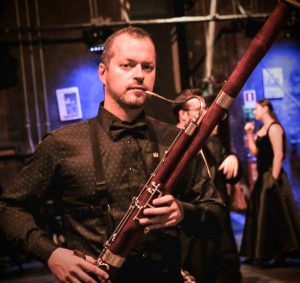Buffet versus Heckel: Interactions and Confrontations of Two Bassoon Systems
Doctoral student: Žilvinas Smalys
Research consultant: Assoc. Prof. Dr. Judita Žukienė
Department: Winds and Percussion
Artistic research project defended as extern in 2015
Abstract
There are two coexisting bassoon systems in use today – Buffet and Heckel. They are considered as two independent bassoon standards that differ from each other in their construction, tone and handling. Although they historically underwent a different evolution process and represent different construction concepts, both systems fully correspond to the criterias and requirements towards bassoon in orchestral, chamber and solo music. The existence of two different systems undoubtedly left a distinctive mark in musical traditions in many countries. It is also undisputable that their qualities influenced the application of bassoon as well as composers’ opinions about the instrument. This theory can be proven using selected examples from orchestral and solo repertoire. These examples clearly show how bassoon evolution and the qualities of its two systems influenced the application of the instrument. They also serve to deny some popular stereotypes regarding the use of two systems and their properties.
The coexistence of two bassoon systems and their competition is a problematic topic which rarely received attention from the researchers. This process caused a significant change in two system distribution across the world and musicians’ opinions regarding them. Therefore it should be analyzed as a separate phenomenon of bassoon evolution. In combination with historical retrospective and organology issues, this allows to foresee possible prospects in bassoon development in the 21st century.


